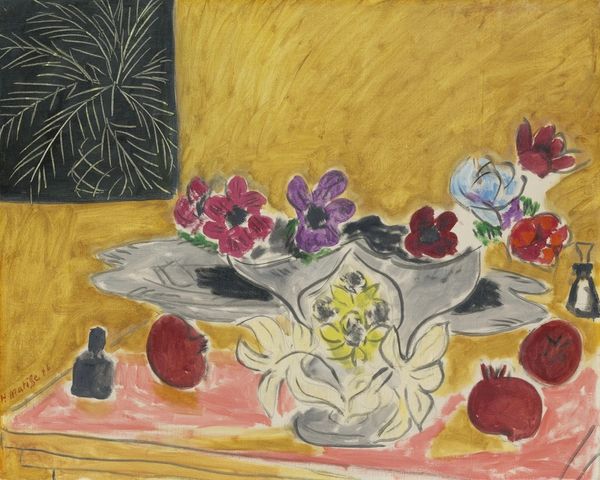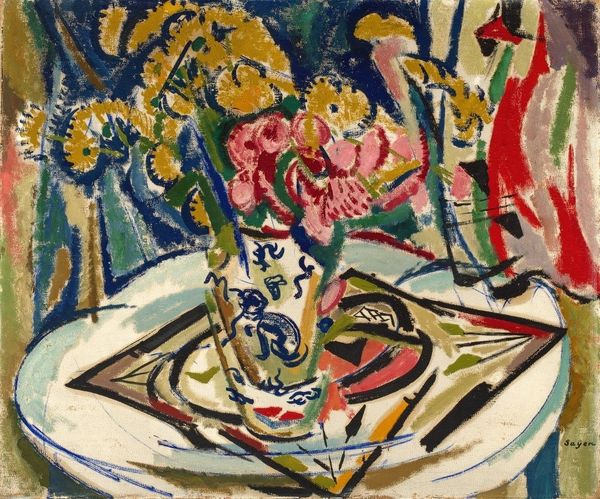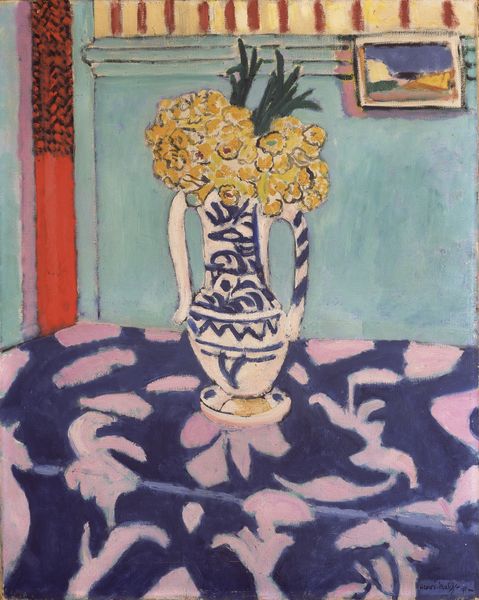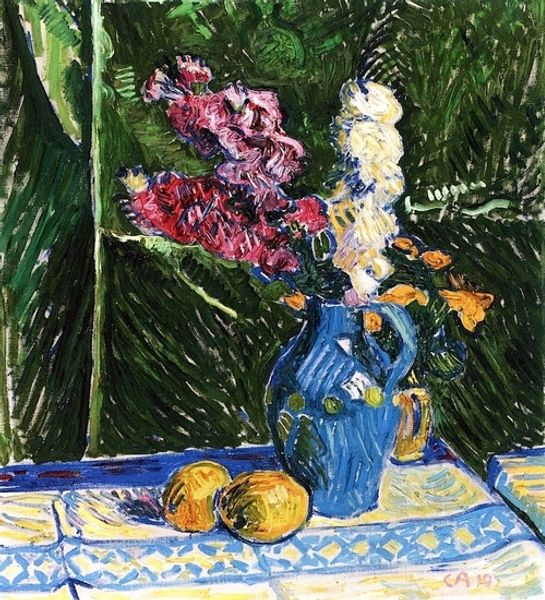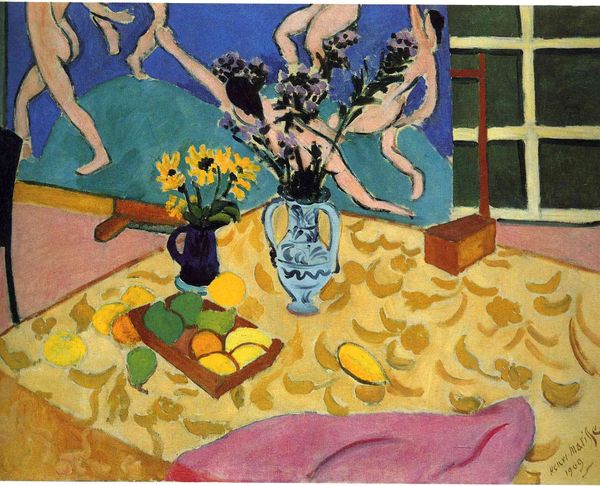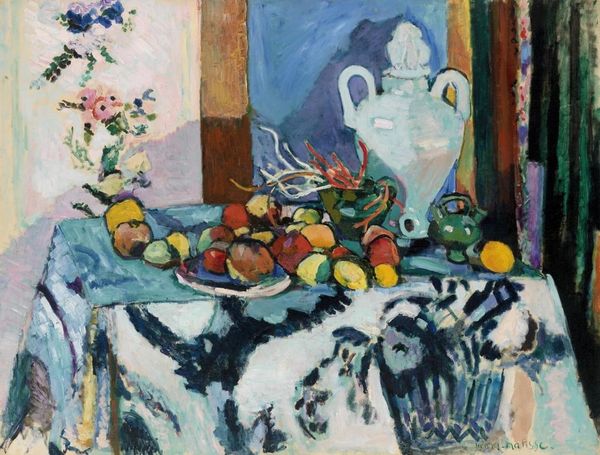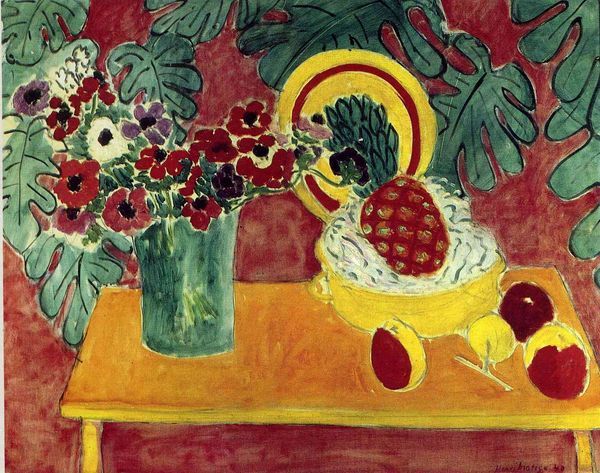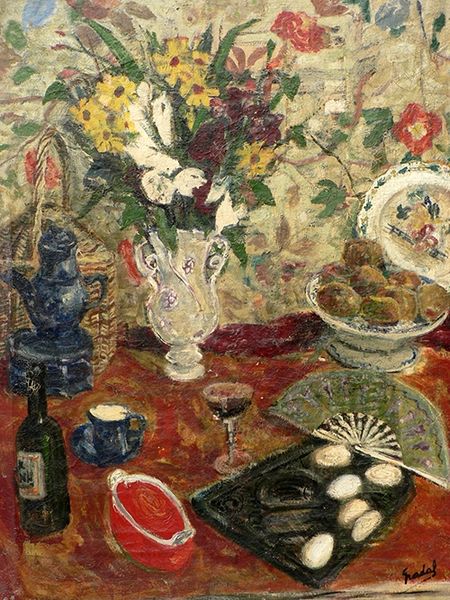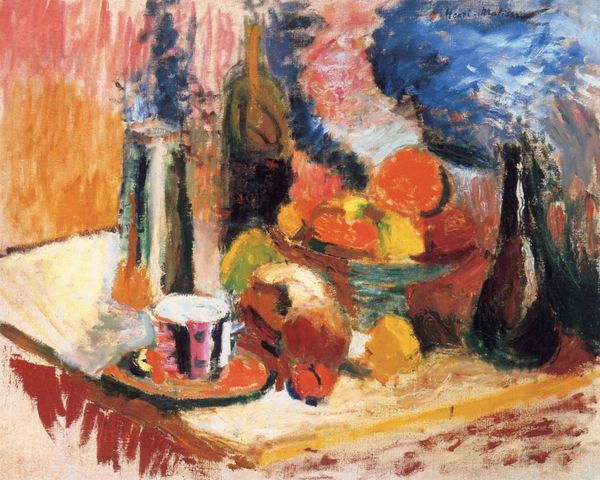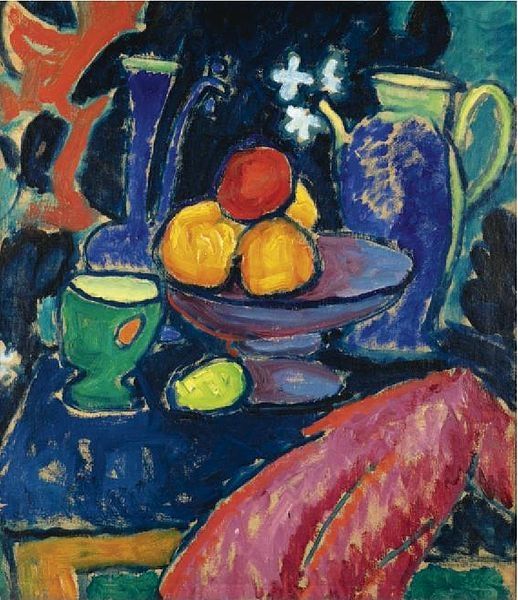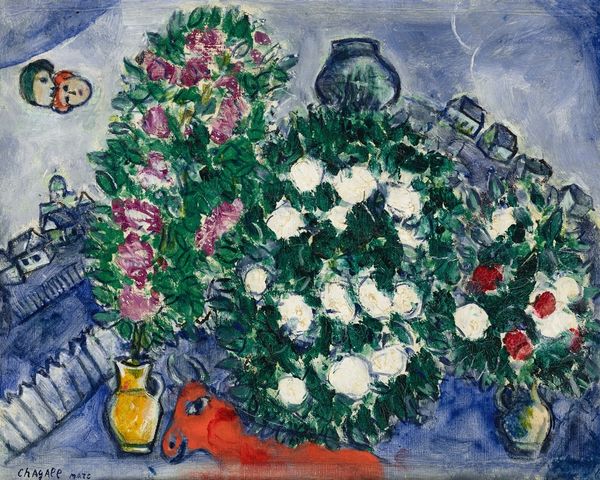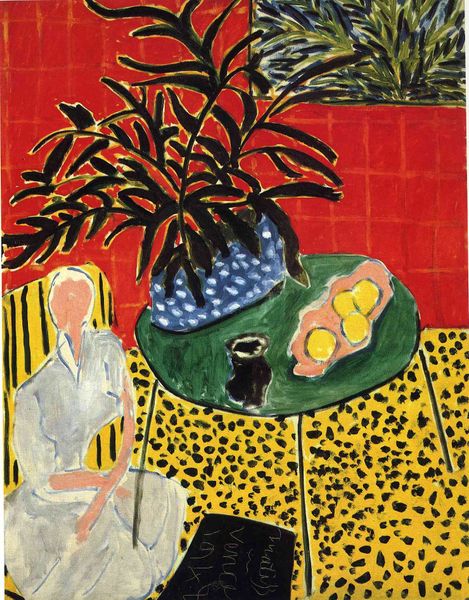
Copyright: Margit Selska,Fair Use
Curator: This is Margit Selska's "Still Life with Lamp," created in 1970. It’s a painting that exemplifies the fauvist style with its bold use of color and simplified forms. What are your immediate thoughts on encountering this artwork? Editor: The first thing that strikes me is the thickness of the paint application; the impasto is quite evident, particularly in the lamp and the flowers. There is an appealing focus on materiality, as well as a celebration of color and simple construction. Curator: Indeed, the very evident brushstrokes bring a tangible quality to this domestic scene. We see in it an interrogation of feminine domesticity in the post-war period, particularly within the constraints and expectations placed on women artists. It becomes a socio-political assertion, reclaiming this space and aesthetic as worthy of artistic expression. Editor: It seems Selska directs our focus toward the means of production and everyday materials. That humble lamp, rendered with such deliberate materiality, draws attention to the work and skill embedded in something as commonplace as illumination, and more generally to art's commodity function in a household. Curator: Precisely, but she is not only documenting; she is transforming. Consider the implications of a woman artist liberating still life painting from its historical constraints of portraying idealized objects for bourgeois audiences by portraying objects related to homecare with raw honesty. Editor: The textiles also strike me. Look at how the printed fabric contrasts against the smoothness of the lamp and the vase, the material tensions enhance our appreciation for how these were made—both the art within the painting, but also the implied labor involved in manufacturing and trade. Curator: Moreover, Selska is challenging gendered hierarchies within the art world itself by bringing a renewed vigor to the "feminine" subject of still life, thus inserting herself into broader conversations around identity and representation in Eastern European art. Editor: These objects she portrays become almost architectural because of the broad swathes of color. Selska makes these everyday elements seem more structured and sturdy, challenging expectations about the transience of beauty that we might associate with flowers, in that their depiction ensures some enduring substance. Curator: Absolutely. It seems Selska consciously works at these dual functions. "Still Life with Lamp" encourages us to reassess our preconceptions about both the still life genre and the lived experience of women artists of her era. Editor: And from my perspective, it reinforces our focus on the actual physical act of artistic production; the painting becomes about the transformation of mundane materials into something beautiful and conceptually weighty.
Comments
No comments
Be the first to comment and join the conversation on the ultimate creative platform.
